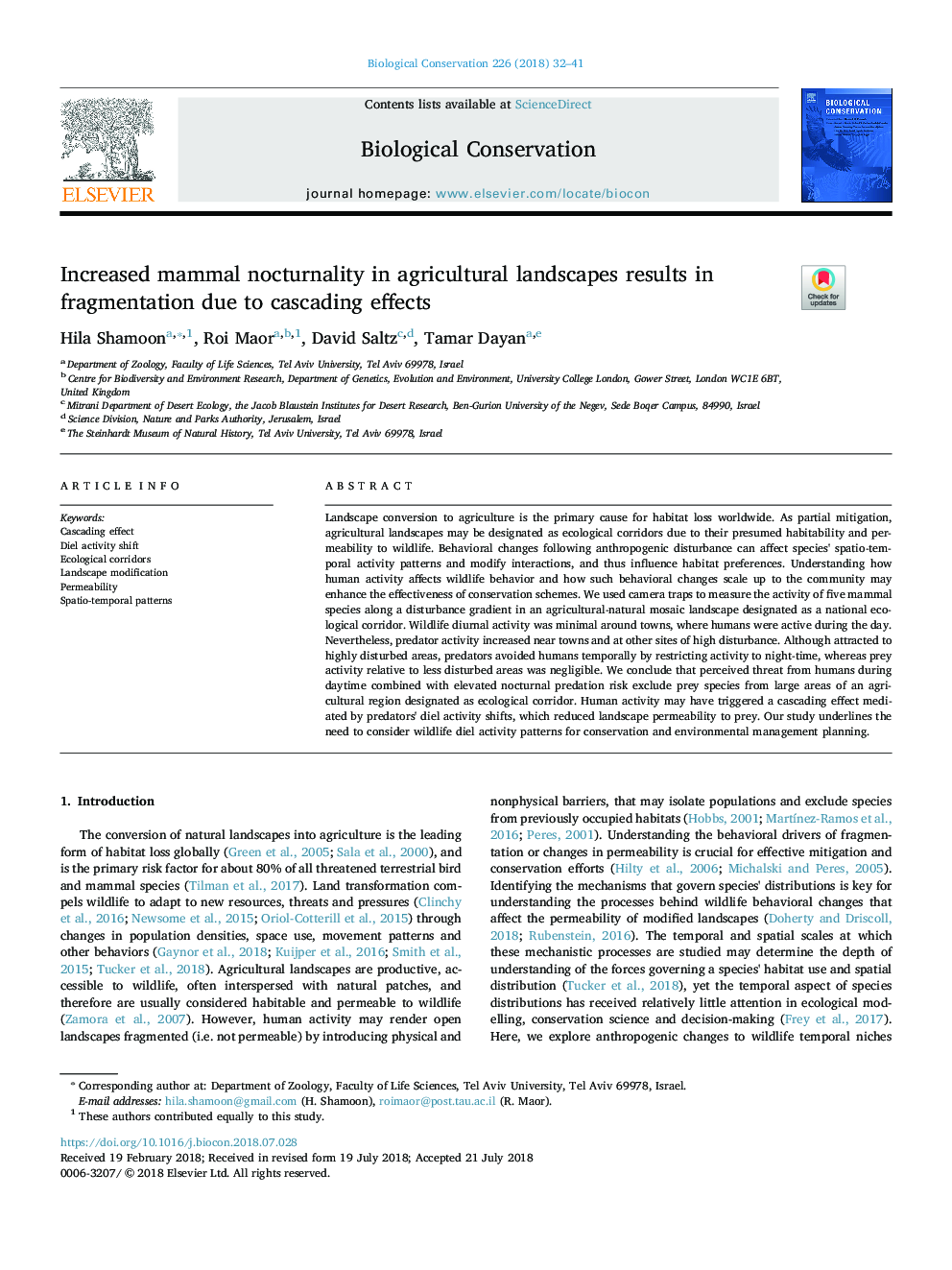| Article ID | Journal | Published Year | Pages | File Type |
|---|---|---|---|---|
| 8847084 | Biological Conservation | 2018 | 10 Pages |
Abstract
Landscape conversion to agriculture is the primary cause for habitat loss worldwide. As partial mitigation, agricultural landscapes may be designated as ecological corridors due to their presumed habitability and permeability to wildlife. Behavioral changes following anthropogenic disturbance can affect species' spatio-temporal activity patterns and modify interactions, and thus influence habitat preferences. Understanding how human activity affects wildlife behavior and how such behavioral changes scale up to the community may enhance the effectiveness of conservation schemes. We used camera traps to measure the activity of five mammal species along a disturbance gradient in an agricultural-natural mosaic landscape designated as a national ecological corridor. Wildlife diurnal activity was minimal around towns, where humans were active during the day. Nevertheless, predator activity increased near towns and at other sites of high disturbance. Although attracted to highly disturbed areas, predators avoided humans temporally by restricting activity to night-time, whereas prey activity relative to less disturbed areas was negligible. We conclude that perceived threat from humans during daytime combined with elevated nocturnal predation risk exclude prey species from large areas of an agricultural region designated as ecological corridor. Human activity may have triggered a cascading effect mediated by predators' diel activity shifts, which reduced landscape permeability to prey. Our study underlines the need to consider wildlife diel activity patterns for conservation and environmental management planning.
Keywords
Related Topics
Life Sciences
Agricultural and Biological Sciences
Ecology, Evolution, Behavior and Systematics
Authors
Hila Shamoon, Roi Maor, David Saltz, Tamar Dayan,
